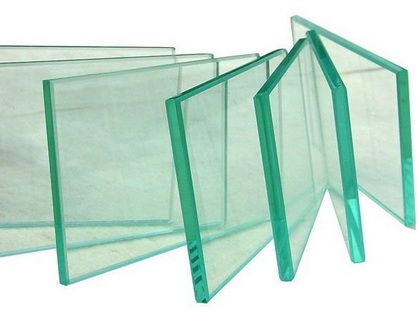When it comes to safety, tempered glass takes the win; it is 4-5 times stronger than standard annealed glass. Because it undergoes a unique toughening process, it is also invulnerable to tensile stress and impact-related breakage.
And even if it breaks, it doesn’t form large shards of glass. Instead, it shatters away into blunt, cube-like pieces that are incapable of causing any serious injuries – indeed, a far safer choice than untreated, regular glass!
Why Upgrade using Tempered Glass?
Here, the real question is – why not?
If you have used standard glass applications in your home, then it is practically a “glass house.” The impact from a projectile, stone, or blow can easily break down these glass applications. They can’t even withstand natural phenomena like temperature fluctuations, wind loads, and hail, compromising your safety BIG TIME!
However, upgrading to tempered glass can help avoid such hassles and dangers. Because of its impact-resistance, heat-resistance, super-strength, and safety characteristics, your home will truly become your safe haven.
The Benefits Involved
Now, tempered glass is well-known for being strong and sturdy – no wonder it finds applications in car windows, balustrades, glass walkways, and building façades, among others.
However, along with the super-strength, it also offers other benefits, as discussed below.
Durability
Under harsh weather conditions, regular glass can get stress-induced chips and cracks that eventually lead to breakage. This is not the case with tempered glass.
The toughening process creates a strong bond between the glass molecules, making it stronger than standard glass, as much as 4-5 times! It can withstand the impact from a projectile, stress from temperature fluctuations, and even burglars trying to break-in.
This is what makes tempered glass durable and long-lasting.
Resilience to Heat
Its resilience to heat is a by-product of the toughening process. During the toughening process, the glass molecules are heated at extremely high temperatures. Consequently, tempered glass becomes more resilient to heat. It develops thermal resistance.
Even if direct heat is applied to it, the glass will not melt or weaken. This is why it can withstand high-temperature differentials without cracking.
All-Weather Resistance
Be it heavy wind loads, thunderstorms, dust storms, or torrential rainfall – tempered glass can withstand them all. No matter how volatile the weather conditions are, they cannot harm this glass member.
Even extreme heat or cold cannot impact tempered glass, but if it were ordinary glass, it would easily succumb to mild impact, let alone heavy damage.
On the other hand, tempered glass is resilient to the stress caused by harsh weather conditions. It is also quite resilient to everyday wear-and-tear, making it the perfect choice for architectural use.
Here are some interesting but uncommon facts about tempered glass that you must know about.
Presence of Compressive Surface Stress
Compressive stress accumulates on the surface of tempered glass when it undergoes the tempering or toughening process. It is due to this characteristic that tempered glass breaks away into small, granular pieces and not large ones.
Besides, it is the presence of compressive surface stress that increases the strength of tempered glass. It also makes the glass safe for high pressure and explosion-proof applications.
It is Scratchproof!
Tempered glass shows resilience to wear-and-tear caused by everyday use. As it is scratchproof and resistant to damage, the surface of tempered glass remains clear and smooth for years.
No wonder it is used for several “see-through” applications like walkways, car windows, and lab equipment.
Cannot be Cut Once Tempered
After the processing of tempered glass, microscopic stress cracks develop on the surface of the glass. Any cutting, grinding or sharp impacts after the tempering process can cause the glass to fracture.
This is why tempered glass is never operated on, post the toughening process. And, if needed, it must be cut or ground before beginning the tempering process.
Its Surface Is Covered With Strain Patterns
After the tempering process, an optical phenomenon called ‘strain pattern’ or ‘quench pattern’ can appear on the surface of the glass and it cannot be eliminated.
Usually, the strain patterns appear like lines, faint spots, or blotches. However, to the naked eye, the glass surface will appear clear and smooth. It can only be viewed using an optical polariser.
Over to You
If safety, thermal-resistance, impact-resistance, and strength are important considerations for you, use tempered glass solutions in your residential spaces.
Available in a variety of designs, patterns, and styles, it befits any and every décor theme – from the sleek elegance of modern styles to the neutral palettes of transitional ones.
Besides, tempered glass ensures the safety and security of occupants with its sturdiness and resilience to impact-related breakage.
For High-Quality Tempered glass, Choose AIS Glass!
AIS Glass – India’s leading integrated glass manufacturing company – offers end-to-end glass solutions for residential and commercial applications. Right from manufacturing, processing to glass selection and installation, our team of technicians will guide you at every step of the process.
We offer AIS Stronglas, a high grade tempered glass known for its high performance against impacts and tensile stresses.
Come avail the right tempered glass, only at AIS Glass. Get in touch with us today!

